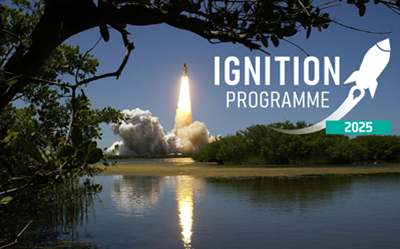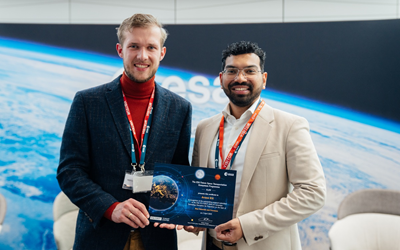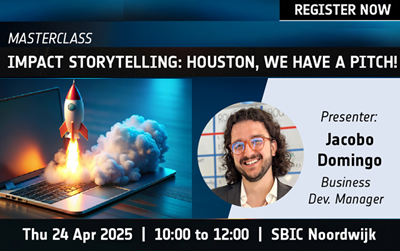The space tech solution of Soilspect is advancing automation on construction sites. During the European Space Agency’s business incubation programme at ESA BIC Noordwijk, the team has been busy – going from prototype to minimal viable product and rolling out the first sales of its flagship device: Spot ONE. There have been many learnings along the way, and we caught up with co-founder Hille Wichers to look back at some of the highlights and ask what’s next for SBIC’s newest alumnus.
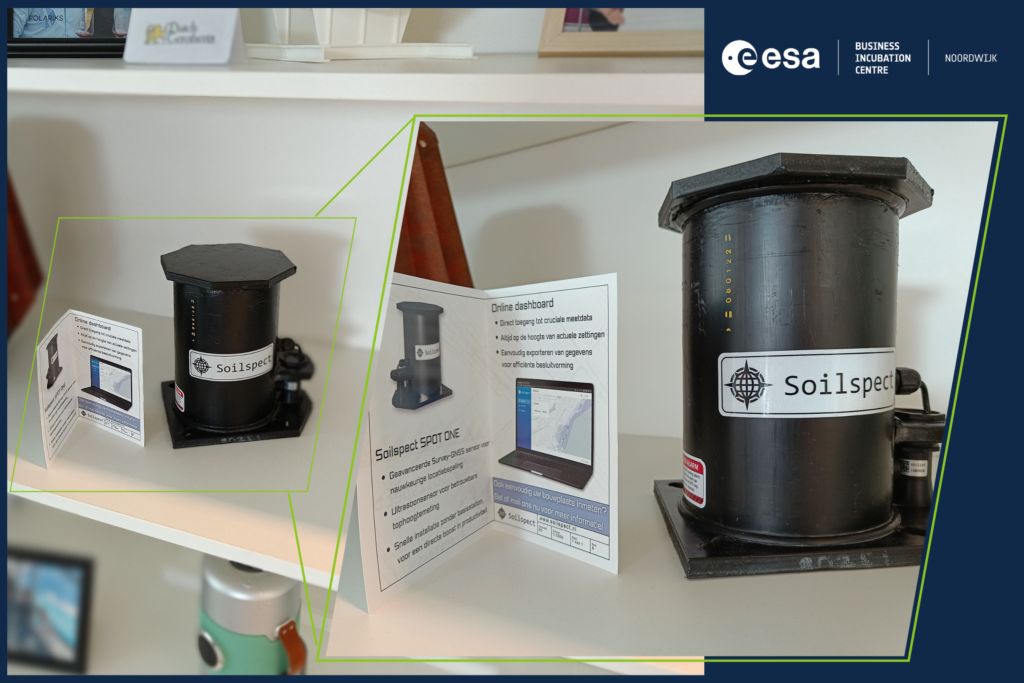
The incubation period can zoom by in the blink of an eye, which is why it is important to hit the ground running – and that is precisely what Soilspect did. The startup currently consists of engineers Hille Wichers and Daniel Spils who, when starting at ESA BIC Noordwijk in the summer of 2021, were working with two other colleagues in the team. At that stage, the four co-founders had already begun developing a settlement measuring device and had a functional prototype. During the incubation programme, their priority was to improve the accuracy of this measuring device with Global Navigation Satellite Systems (GNSS) by collecting data from different satellite constellations, such as the European system Galileo. The potential of the monitoring station did not go unnoticed. Soilspect was the winner of the Dutch regional prize of the Galileo Masters competition in December 2021 and of the “Map my World” category of the myEUSpace competition from the EU Agency for the Space Programme in June 2022.
Soilspect’s progress during ESA BIC was rapid. Within 5 months of being at the incubation centre in Noordwijk, they had finished the first production of 30 measuring stations. After 1.5 years in the programme, the company acquired its first customers and was ready to graduate with a solid business case. Yet, the duo will not be leaving SBIC any time soon as they will continue to have their office in Noordwijk.
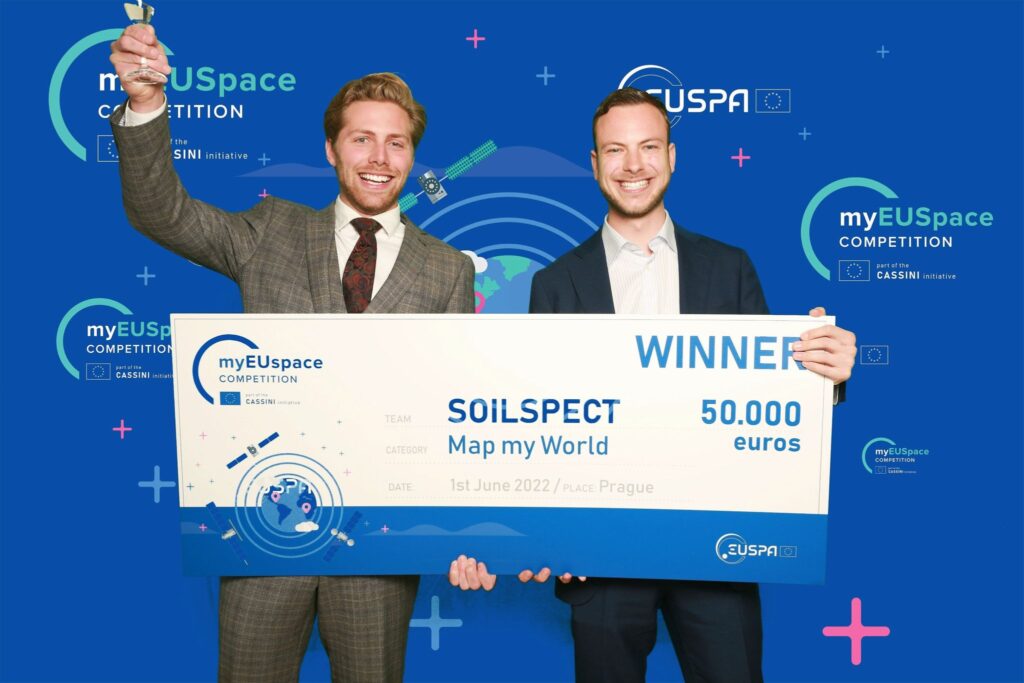
Where did it all start for Soilspect?
It all started at the University of Applied Sciences Amsterdam. We were a group of four engineering students and we realised that in the construction sector, ground settlement measurements were still being done manually. We heard about specific methods to check ground stability by measuring a reference point periodically, which surveyors normally do to determine whether the surface has sufficient load-bearing capacity for the construction of roads and bridges. We wondered whether regular monitoring of the surface could be done automatically. Around the time when we graduated from university, we received funding from Innovation Fund Noord-Holland to perform a feasibility study. We then decided to continue to develop our idea.
How did you end up at SBIC Noordwijk?
At the time, Daniel was working at HDES, one of the incubatees in Noordwijk. With our own solution, the monitoring of settlements with satellite positioning, we knew that there was a space connection. Once we developed a working proof of concept, we wanted to apply for the ESA BIC. We decided to join the Ignition Programme first to critically look at our idea. It turned out to be a good choice because after going through this pre-incubation programme, our application was accepted and we officially became part of ESA’s incubation programme.
What did you work on during the ESA BIC programme?
In the first 3 months of the incubator programme, we decided to improve our prototype and we spent most of our time on the development of our product Spot ONE (see Box 1). With the funding from ESA BIC, we were able to use better production methods and lots of testing tools, which increased the quality in such a way we could effectively build a first series. Apart from money, developing also costs a lot of time and effort. Just when we thought we were finished, we encountered numerous unforeseen errors, prompting us to fine-tune our calculations and improve the accuracy of Spot ONE. This last stretch of development, which we didn’t anticipate, took up a significant portion of our time. Furthermore, we worked hard to ensure the reliability of our product. Our measurements serve as the bedrock for infrastructure construction, making precision absolutely essential.
About the product: Spot ONE is an innovative measuring system designed for use on new construction sites. Ground stability can automatically be assessed regularly and remotely. Making use of advanced GNSS technology, the system takes real-time measurements and gives an accurate picture of stability with a precision of less than 1 cm. The stability and movements of the ground can be followed live via a user interface with the option to export and analyse data and share it with other team members and/or clients. It makes reporting on settlements and preparing for construction a lot easier, quicker and more efficient than ever before. soilspect.nl/product
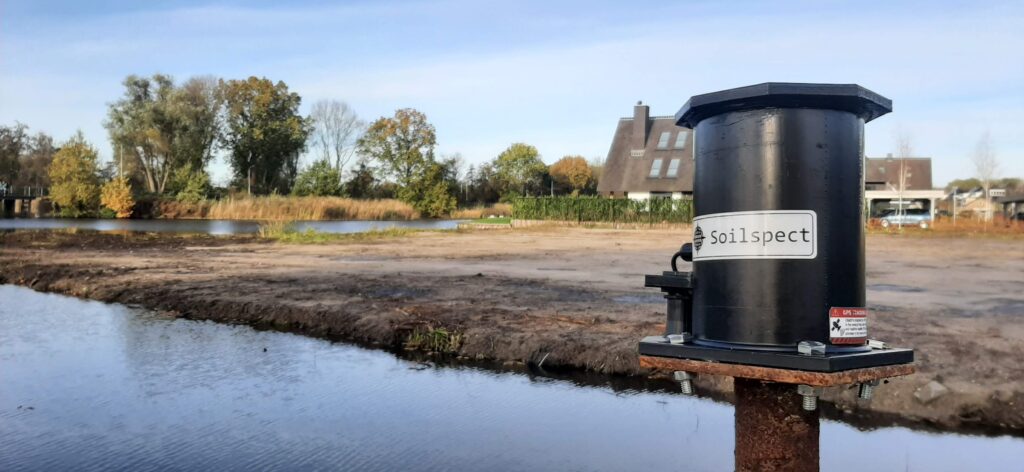
What did you learn during incubation?
Throughout the process, we gained new insights by learning through hands-on experience. We quickly realised that successfully running a business requires a seamless integration of various aspects. For instance, our product platform needed a user-friendly front end for customers to log in, as well as a robust back end for managing files and processing the appropriate input. Additionally, we had to establish connections with field stations, each of which required programming and a reliable communication system. We discovered that even a minor issue in one part of the system could create problems across the entire chain. Consequently, we devoted a substantial amount of time to ensure everything functioned smoothly and efficiently.
The beauty of this hands-on approach is that it allowed us to gain a deep understanding of various disciplines, ranging from electronics to business processes. This multidimensional knowledge proved to be invaluable in helping us develop and refine our business model, ultimately contributing to the success we’ve achieved thus far. Furthermore, ESA BIC provided us access to an extensive network of industry professionals, mentors and potential partners, which greatly expanded our connections and opportunities for collaboration. This exposure allowed us to forge strategic relationships and learn from the experiences of others in the field.
Additionally, the incubation programme included a series of workshops and training sessions that covered various aspects of entrepreneurship, such as business planning, marketing, financial management and intellectual property protection. These sessions enabled us to refine our strategies, to ensure a solid foundation for our business. During the incubation, we also explored funding opportunities and grants. As a startup, securing investment was crucial for our growth, and the ESA BIC provided us with resources and connections to help us navigate this process successfully.
What was the best advice you received from the ESA BIC coaches?
As engineers, we are very focused on technical innovation. We like to tinker with the product, but we didn’t spend as much time on the business side. This changed once the coaches, Roeland Mackloet and Jeroen Mes, made the red siren flash to draw our attention to business development. They encouraged us to allocate more time and resources to the commercial aspects of our startup. We took the advice and started talking to potential clients, which ultimately led to convincing Boskalis – a Dutch dredging contractor offering various construction services – to start a pilot with us in May 2022. During this pilot, we could test our system in a relevant environment and we received valuable customer feedback from Boskalis. This helped us improve our system and, most importantly, the business model. After a year in the programme, we made a conscious effort to balance our focus between technology and business development. We set clear goals, and regularly checked in with our coaches to ensure we were on track. Next to business support, we also received technical assistance from partners like Mapture and HDES during the incubation programme. They helped us identify and resolve issues in our system, which was helpful in refining our product.
As a startup, securing investment was crucial for our growth, and the ESA BIC provided us with resources and connections to help us navigate this process successfully
HILLE Wichers
What external parties did you work with?
To prove the reliability of our product, we have tested it on a few pilot projects during recent months. Our stations have been installed in various locations. Right now, we are working together in consultation with Boskalis. We continuously check with them what they need and expect from our product.
Towards the end of our incubation, we focused on developing a new sales strategy. We cooperated with students from the Community of European Management Schools (CEMS) who made a marketing map. This helped us to work out a marketing strategy. With the help of a publicly available list of Dutch tenders, we call all the companies who acquired a possible project that involves settlement measuring. We are targeting projects which haven’t started yet to make the clients include our system in their project’s scope. This has resulted in the first few sales to such projects. For example, we are currently doing a paid project with JdB group in Amstelveen, a construction contractor in civil engineering.
Are you planning to expand the team?
Before we expand our team, we want to focus on building up a portfolio of projects and clients. We opted for production partners who can handle large orders efficiently and we are set up in such a way that if there is a large request, our production can be scaled up very easily. Therefore, we do not really need a lot of staff for now.
How was the transition from student to startup?
As a student you have a bit more flexibility, but to reach the next level you have to make choices. You need to sign contracts and make commitments. The ESA BIC programme took us to the next level. With office space available at SBIC Noordwijk, we didn’t have to work from home any longer. We also started to use planning methods to keep track of our to dos. This really helps us to manage our time. You take all these little steps and gradually professionalise your activities. Through recurring events like the Entrepreneurs Coffee (the monthly meet-up of all ESA BIC startups), you build a community with the other incubatees and businesses. Everyone puts their problems on the table and can help each other out. Whether you have a question about programming or you need feedback for a brochure, you can always ask around or find an expert.
Soilspect has been successful in winning a number of competitions – do you have a secret formula?
We always try to provide a good story and turn it into a nice presentation. In addition, we make clear plans of what we would do with the prize money in case we win it. Maybe we also have an edge because of the simple reason that we have a physical product. We crossed paths with a lot of software companies and I think a physical product is just a bit easier to visualise for an audience or jury.
What lessons would you like to share with other entrepreneurs?
Leave your desk as soon as possible and start talking to people you are going to solve the problem for. Whenever we engage with our customers, they provide new suggestions and ideas that we would never have come up with. Their feedback also reinforces our business and allows us to incorporate validation. We collect this feedback and apply it directly into the measurement system, so that we are developing something that they really want. This way, we are always one step ahead of the competition.
What does the future hold for Soilspect?
The coming months will be all about effective marketing of our measuring station, Spot ONE. The construction world is fairly conservative, and people are very used to the fact that someone visits the construction site to take the measurements. By running pilot projects, we convince them that our product is a more efficient solution. We will also visit trade fairs to talk to construction companies to make them aware of our existence. Based on the data we get from our stations and together with geotechnical experts, we could even explore predicting soil settlements based on the collected data with our Spot ONE.
Ultimately, our goal is to advance automation by creating a wide range of products that empowers building companies to use innovative solutions, so they can meet the ever-increasing demands of the industry.
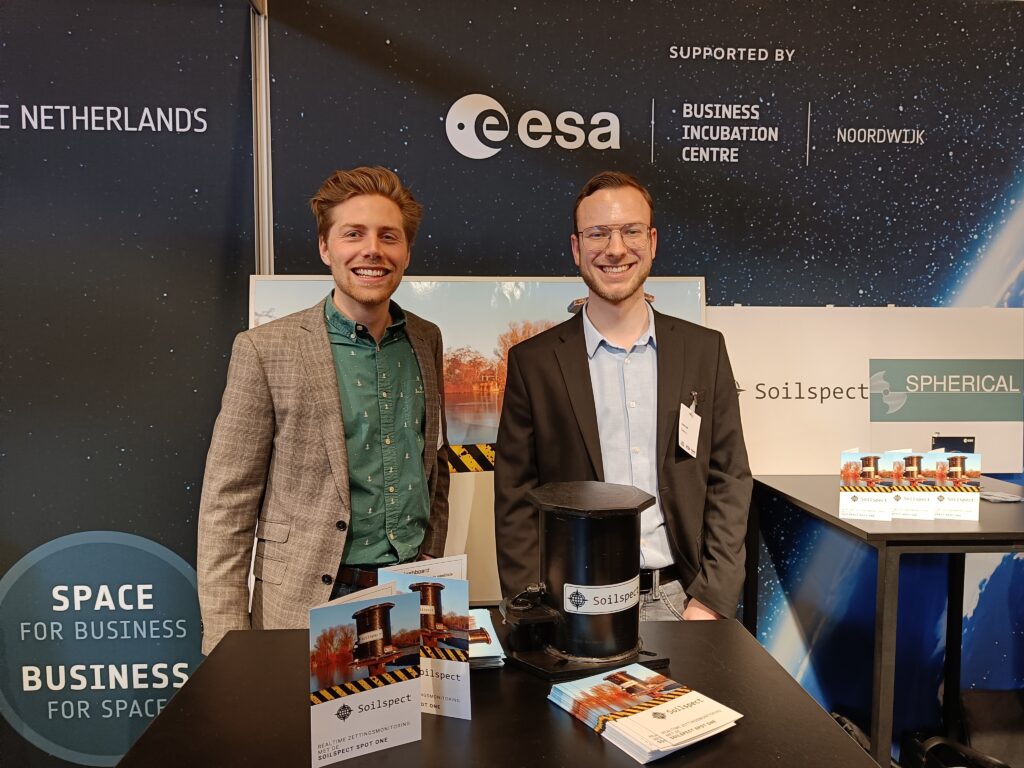
ABOUT SOILSPECT
Determining whether the surface has sufficient load-bearing capacity is crucial for the construction of roads, bridges and other infrastructure. With the use of GNSS, Soilspect takes ground settlement measurements to a new level. When placed on a construction site on settlement gauges, the company’s first product Spot ONE automatically monitors settlements, providing accurate insights into ground movement and allowing for the rapid delivery of projects. After graduating from the ESA incubation programme in early 2023, Soilspect continues to accelerate sustainable and efficient construction from Noordwijk. soilspect.nl/blog
Related posts:
Carble and Soilspect winners of The Netherlands Prizes at Copernicus Masters & Galileo Masters 2021
Soilspect automatically monitors ground settlement with space technology
